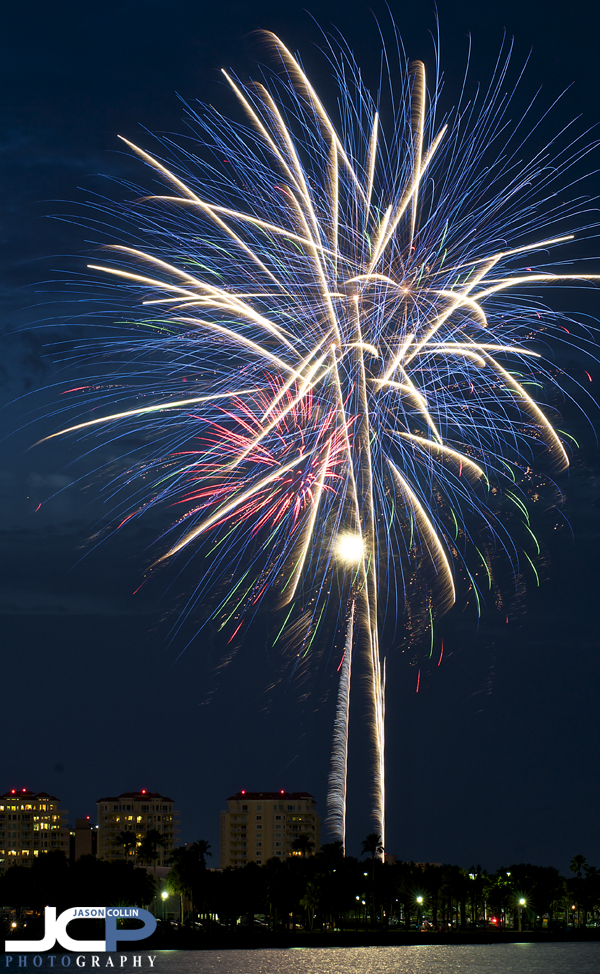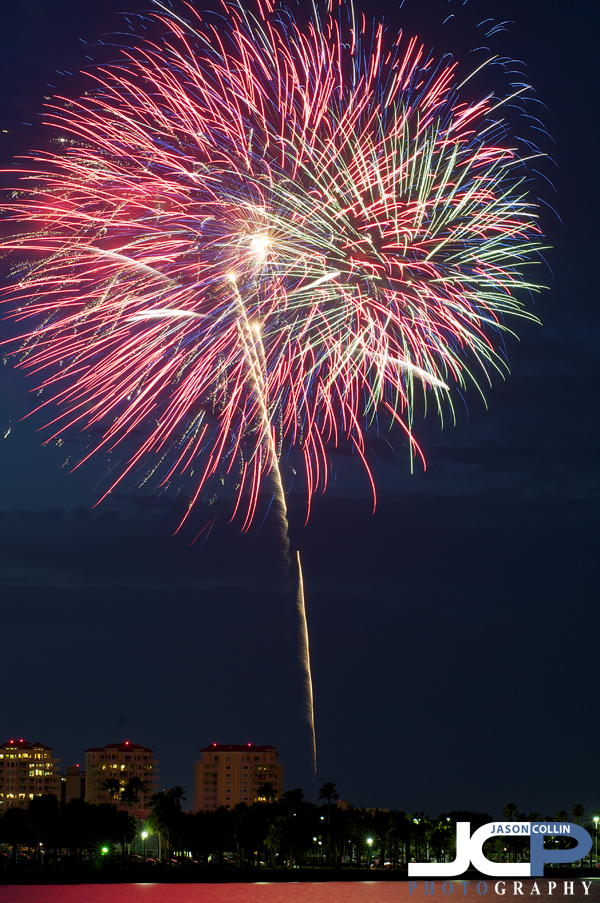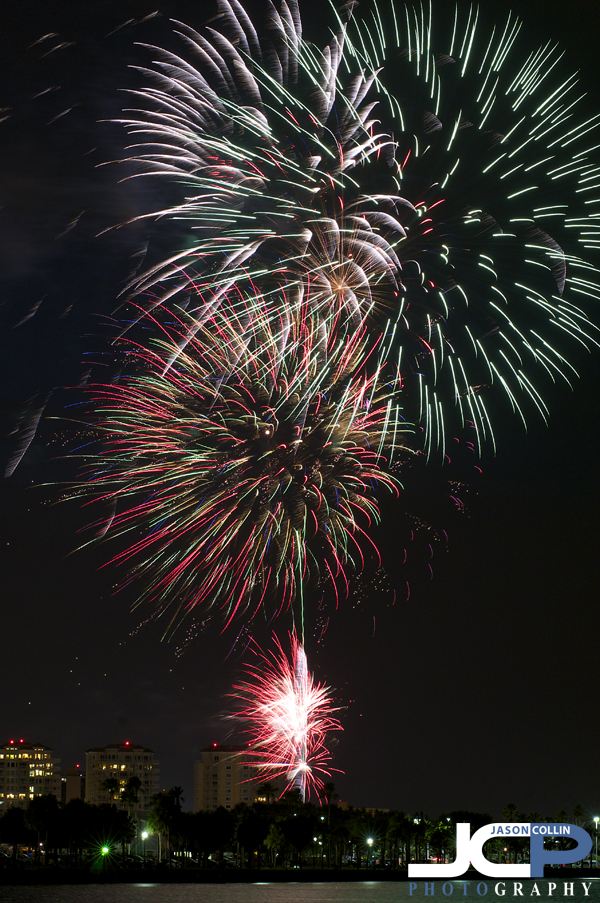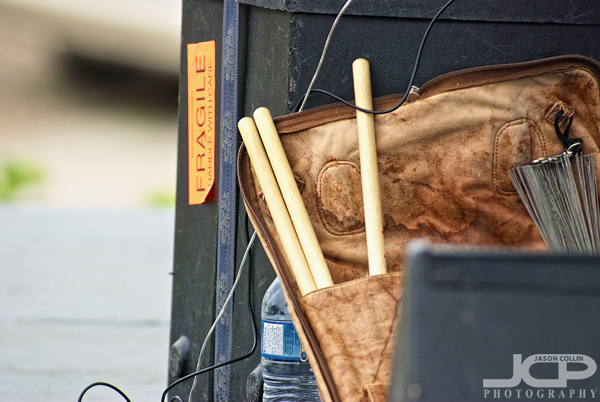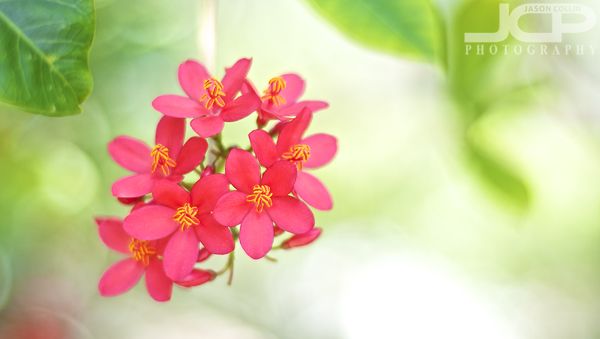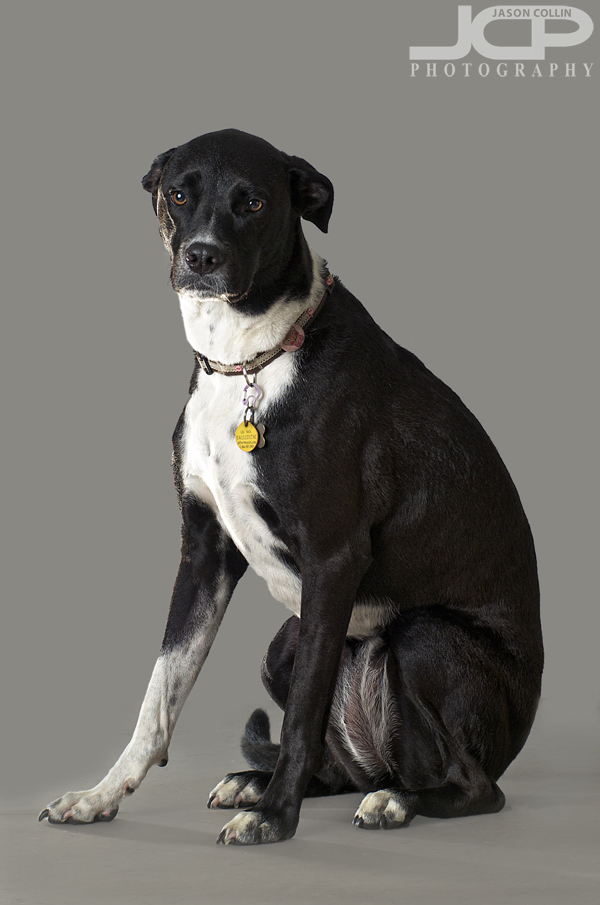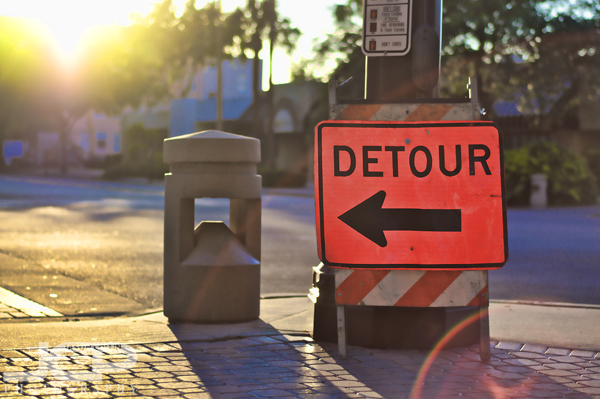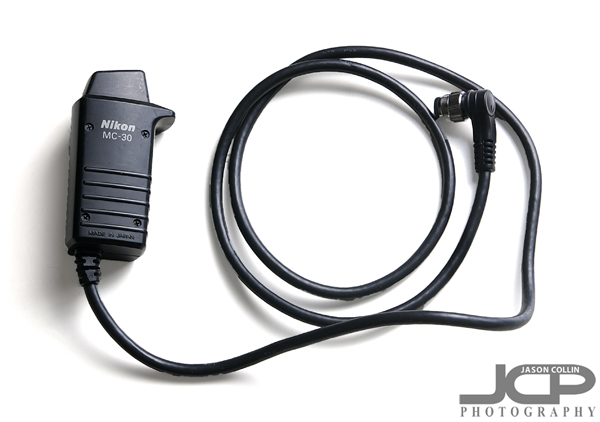 My own well-worn Nikon MC-30 cable release which is an essential piece of gear in my bagI am a very firm believer in having the right tools for the right job, and if you own a tripod, then you certainly should own a cable release as well. Cable releases tend to only work with a select few DSLRs based on the connection the camera has. The cable release for my Nikon D300 is the Nikon MC-30 which at the time retailed for $99, but thankfully Amazon.com had it for just $49 on sale. It currently is priced at $55.61. There are cheaper cable releases for other cameras and of course much more expensive ones with LCD screens and more functions. For my $49 I got the most basic cable release you could get, a small rectangle of plastic with a shutter release button and a lock button. That said, it does its job very well and I have gotten my money's worth out of it.
My own well-worn Nikon MC-30 cable release which is an essential piece of gear in my bagI am a very firm believer in having the right tools for the right job, and if you own a tripod, then you certainly should own a cable release as well. Cable releases tend to only work with a select few DSLRs based on the connection the camera has. The cable release for my Nikon D300 is the Nikon MC-30 which at the time retailed for $99, but thankfully Amazon.com had it for just $49 on sale. It currently is priced at $55.61. There are cheaper cable releases for other cameras and of course much more expensive ones with LCD screens and more functions. For my $49 I got the most basic cable release you could get, a small rectangle of plastic with a shutter release button and a lock button. That said, it does its job very well and I have gotten my money's worth out of it.
 It just plain feels cool to use a cable release, like you are an old-time photographer.Why do you need a cable release if you already have your camera on a tripod? Because the act of pushing the shutter with your finger can and will produce shake even with your DSLR on a stable tripod. Using a cable release along with a tripod insures the most stable shooting method. Plus, it just plain feels cool to use a cable release! It will make you feel like an old-time photographer. It is just another tool, along with a good tripod, that really, really helps you relax while out in the field making photographs.
It just plain feels cool to use a cable release, like you are an old-time photographer.Why do you need a cable release if you already have your camera on a tripod? Because the act of pushing the shutter with your finger can and will produce shake even with your DSLR on a stable tripod. Using a cable release along with a tripod insures the most stable shooting method. Plus, it just plain feels cool to use a cable release! It will make you feel like an old-time photographer. It is just another tool, along with a good tripod, that really, really helps you relax while out in the field making photographs.
 The lock button on the Nikon MC-30 helps when shooting in bulb modeThe one feature of the Nikon MC-30 cable release is its lock button, or rather switch on the side of the device. Being able to lock the shutter open is very convenient when using bulb mode. This way you do not need to keep the shutter pressed the entire time, you can just lock it. When I photograph fireworks, I lock the shutter open allowing me to concentrate on blocking the front of the lens with a card.
The lock button on the Nikon MC-30 helps when shooting in bulb modeThe one feature of the Nikon MC-30 cable release is its lock button, or rather switch on the side of the device. Being able to lock the shutter open is very convenient when using bulb mode. This way you do not need to keep the shutter pressed the entire time, you can just lock it. When I photograph fireworks, I lock the shutter open allowing me to concentrate on blocking the front of the lens with a card.
 The unique connector port for the Nikon MC-30 on my Nikon D300Refer to your particular's DSLR maker's website for which cable release will work with your camera because there are several different port connectors on cameras. One complaint about the Nikon MC-30 is that connecting it is awkward due to the small line up point markings on it, but I actually always attach it blind because the bend of the cable naturally lines up with the pin connector! Likewise, I never screw the cable onto the port, I just push it in and it has never popped off.
The unique connector port for the Nikon MC-30 on my Nikon D300Refer to your particular's DSLR maker's website for which cable release will work with your camera because there are several different port connectors on cameras. One complaint about the Nikon MC-30 is that connecting it is awkward due to the small line up point markings on it, but I actually always attach it blind because the bend of the cable naturally lines up with the pin connector! Likewise, I never screw the cable onto the port, I just push it in and it has never popped off.
Even at its current price, the Nikon MC-30 can seem very expensive for essentially a piece of wire with a button on it, but I believe the value of having one and using it will definitely help your photography.

